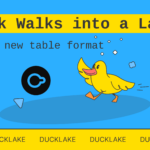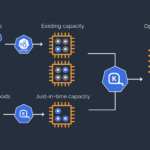
Exciting news for developers and IT professionals who leverage Kubernetes! Akamai recently announced support for the Kubernetes Cluster API (CAPL), streamlining cluster creation, configuration, and management.
What is Cluster API (CAPI)?
CAPI, or “kappy” for short, is an open-source project that introduces a declarative approach to managing Kubernetes clusters. Similar to Infrastructure as Code (IaC) tools, CAPI utilizes configuration files written in YAML format. This simplifies cluster management and fosters consistency across different cloud providers and on-premise environments.
Benefits of CAPI with Akamai
CAPI integration with Akamai, particularly through the Linode Kubernetes Engine (LKE), offers several advantages:
- Reduced Complexity: Manual Kubernetes cluster setup is a time-consuming and error-prone process. CAPI automates this task, saving you valuable time and resources.
- Enhanced Portability: CAPI configurations are portable across various cloud providers and on-premises deployments, ensuring flexibility in your infrastructure choices.
- Improved Automation: CAPI automates cluster creation, configuration, and management, minimizing manual intervention and potential human errors.
How CAPI Works
CAPI utilizes a two-cluster model:
- Management Cluster: This cluster serves as the central hub for building and managing workload clusters.
- Workload Clusters: These are the actual clusters where your containerized applications run.
Changes to workload clusters are implemented by editing and deploying a YAML file. This file can specify adjustments like Kubernetes version, node count, and resource tolerances.
Getting Started with CAPI on Akamai
While CAPI is under active development, it’s readily available for use within any of Akamai’s core compute regions. It’s important to note that regions lacking VPC functionality require a ” vpcless ” cluster deployment.
CAPI offers compatibility with various Kubernetes distribution and plugin providers, including Rancher, providing further flexibility in your deployments.
Ready to Learn More?
For a deeper dive into CAPI on Akamai, explore the official documentation: Getting started with CAPL
This integration of CAPI empowers developers and IT professionals to manage Kubernetes clusters with greater ease and efficiency. With its focus on automation and portability, CAPI paves the way for a more streamlined and scalable approach to containerized application deployment.
Reference to the Article- Akamai











